Drum
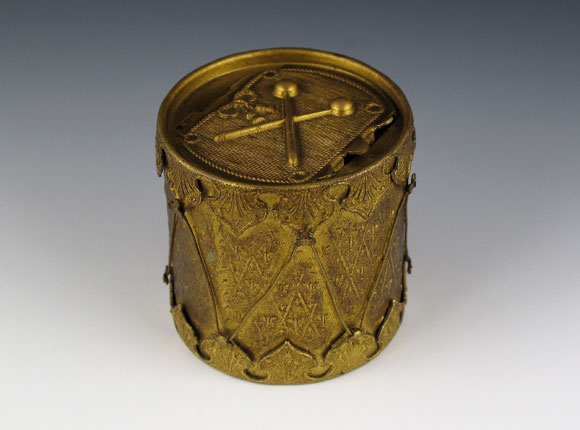
Needle Case
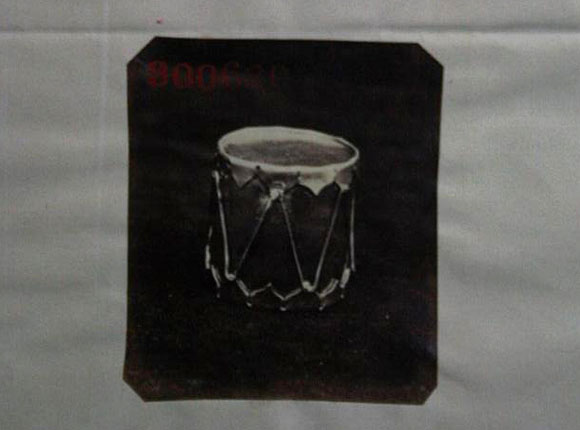
Design Representation
Design Details
Needle Case Type: |
Figural |
Patent/Registered to: |
W. Avery & Son - Redditch |
Patent/Design Representation #: |
Ornamental Class1: Metal: #300680 |
Patent/Design Registration Date: |
May 22, 1876 |
Location of Patent/Design Registration: |
The National Archives (TNA) - Kew, UK |
Reference #: |
TNA Representation - BT 43/40/300680
TNA Register - BT 44/3/300680 |
Dimensions: |
3.7 diameter x 3.6 |
Material: |
Brass |
Name Variations: |
a) W. Avery & Son - Redditch
b) Cormack Bros - London
c) John Howell & Co - London
d) Charles, Reynolds & Co - Cheapside, London
e) C. G. Wacker & Co - Redditch (the only known needle case with this company name is in the collection found at
www.averyneedlecases.com as no example of this needle case with this company name has been seen by the authors of this website) |
Other Variations: |
None |
Additional Photographs
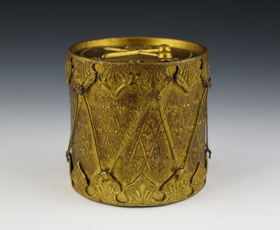
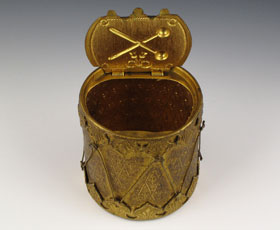
Side views with top closed and open
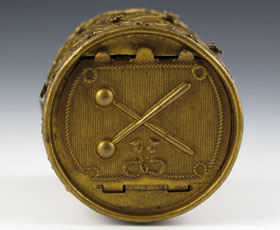
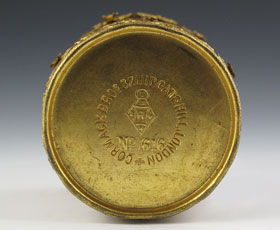
Top with lid and bottom Cormack signature detail
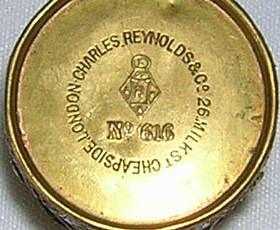
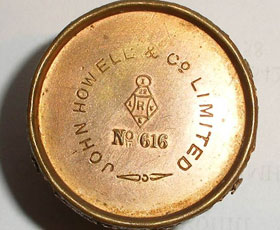
Bottom Charles, Reynolds & Co signature detail (photo from eBay) and Howell signature detail (photo courtesty of Bunny's Place)
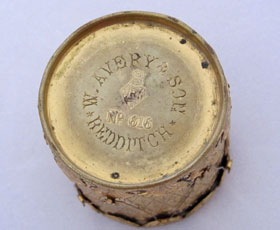
Bottom Avery signature detail (photo courtsey of Clarice Birch)
Facts
The drum, a percussion instrument, consists of a skin or membrane stretched over a structure, usually cylindrical, called the shell. Sound
is produced by striking the membrane with the hands or sticks. There are many variables that determine the sound of the drum including size
and shape of the shell, what the shell and membrane are made of and the tension on the membrane. Tension on the membrane in modern drums is
governed by adjustment of tension rods spaced around the rim holding the membrane over the shell. Before tension rods came into use, ropes,
zigzagging around the circumference, were used to tension the membrane.
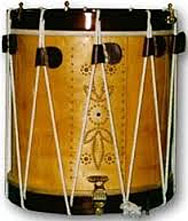
History
The drum is the earliest instrument known dating to 4000 BC. Pottery drums have been found in Neolithic grave excavation in China. In
different cultures, drumming has been used for long distance communication, in rituals including prayer and dance, and for military purposes.
Ancient Chinese armies used drums to set a marching rhythm, raise the moral of the soldiers and communicate orders above the noise of battle.
European armies adopted drums for the same purposes around the Renaissance period. Each troop had a drummer to convey orders in battle and
when bugles which could be better heard over battle noise became the norm, these too were carried by the drummer. By the 20th century the role
of army drummers became largely ceremonial.
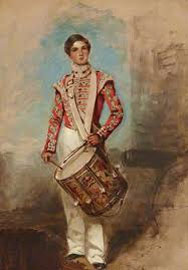
Miscellaneous
Because many of the recruits to fill the role of drummer in Western armies were very young, they became to be known as drummer boys.
In the American War of Independence, the youngest was claimed to be a 7 years old with the North Carolina Continental Militia. Thomas Flinn a
fifteen year old drummer with the British 64th Regiment of Foot was awarded the Victoria Cross for the brave deeds he performed on 28th November
1857 during the Indian Mutiny. Queen Victoria created the award in 1856 to recognise acts of bravery in the Crimean War and it remains
Britain’s highest award for acts of bravery in the presence of the enemy.
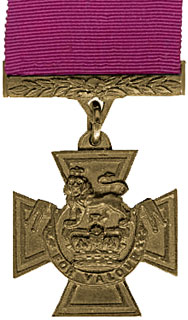
Victoria Cross
Note: Right side panel text and photos provided by Lynda Herrod.
















